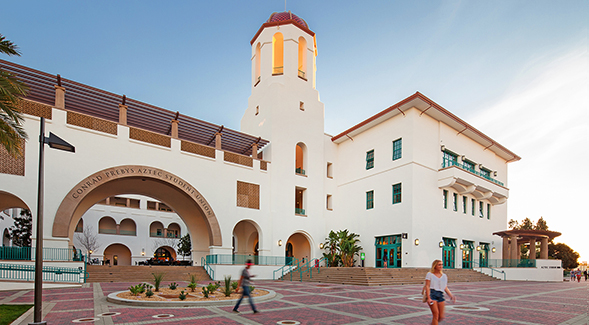Daily Business Report-Sept. 5, 2019
Conrad Prebys Aztec Student Union (Photo courtesy of SDSU)
An ‘Exceptionally Good Year’
for San Diego State University
By Tobin Vaughn |SDSU NewsCenter
As San Diego State University kicks off a new academic year with its annual Day of Giving set for September 25, administrators hope to launch a year of philanthropy as successful as the last. During the 2018-19 fiscal year, the university netted almost $116 million in gifts, a significant increase from just over $83 million in 2017-2018.
SDSU Interim Vice President of University Relations and Development Adrienne Vargas characterized the final tally as “an exceptionally good year.” She said the total was especially gratifying considering the university is not currently involved in a fundraising campaign.
Leading the way in terms of total gift amounts was KPBS, which raised more than $48 million last year, followed by more than $27 million generated by the university’s Office of Planned Giving. Vargas credited KPBS General Manager Tom Karlo (’75) and his staff for their outstanding work in donor development and stewardship along with maintaining the station’s commitment to high-quality journalism and programming.
______________________
Insurance Commissioner’s mea culpa
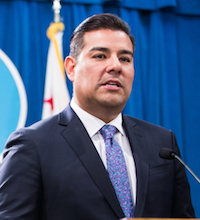
Insurance Commissioner Ricardo Lara has sworn off fundraising for the rest of the year, after news organizations reported he violated his own pledge by accepting more than $50,000 in insurance-related campaign contributions since being elected last year.
Why it matters: Lara oversees California’s $310 billion insurance industry. His office is especially relevant as insurance companies grapple with wildfire risk, and drop customers in fire-prone parts of the state.
Lara promised during his campaign that he would not take insurance industry money.
The San Diego Union Tribune, followed by others, disclosed he violated that pledge by, for example, accepting $15,500 from a New York City nursery school operator who is the wife of an insurance executive.
In a letter made public Tuesday, Lara said “no laws or rules were broken— and these interactions did not affect nor influence my official actions in any way.”
Lara’s letter says he takes full responsibility but “terminated” a fundraiser, and is imposing a “strict moratorium” on fundraising for his 2022 re-election campaign.
Lara: “I can and will do better. These failures are not consistent with my personal values nor my long career in public service.”
Lara’s letter neglects to mention he was his own campaign treasurer.
California’s Fair Political Practices Commission describes a treasurer’s duties:
“Campaign treasurers sign campaign-disclosure reports under penalty of perjury and are liable in enforcement actions for violations of the [Political Reform] Act. … No individual should accept the position of a committee treasurer as a mere figurehead.”
— Dan Morain, CALmatters
______________________
Founder of The Patio Group
charged with fraud by SEC
sdnews.com

The Securities and Exchange Commission on Aug. 29 announced it has filed charges and obtained a consented-to asset freeze against San Diego-based ANI Development LLC, its principal, Gina Champion-Cain, and a relief defendant, for operating a multi-year $300 million scheme that defrauded approximately 50 retail investors.
According to the SEC’s complaint, beginning in 2012, defendants fraudulently raised hundreds of millions of dollars from investors by claiming to offer investors an opportunity to make short-term, high-interest loans to parties seeking to acquire California alcohol licenses. In truth, the SEC alleges, the investment opportunity was a sham. Contrary to defendants’ representations, the SEC asserts, defendants did not use investor funds to make loans to alcohol license applicants. Instead, Cain directed significant amounts of investor funds to a relief defendant that she controlled.
______________________
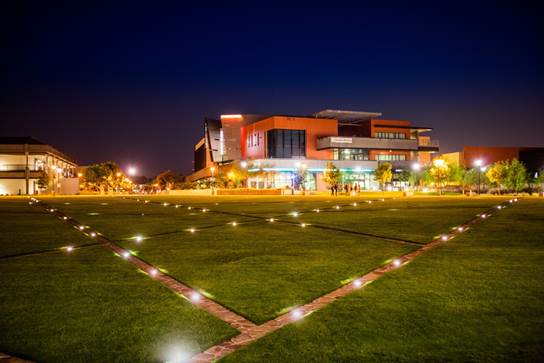
San Diego Community College District
secures top bond ratings again
Two of the nation’s benchmark bond-rating services have again assigned the San Diego Community College District (SDCCD) their highest rating possible, which is expected to save taxpayers as much as $150 million when the district refinances its bonds this fall through a process called re-funding.
S&P Global assigned a rating of AAA to SDCCD’s bonds; Moody’s Investors Service assigned an Aaa rating. Both agencies lauded the SDCCD’s financial management practices, stable reserves and low debt burden, in addition to the strength of the regional economy. Both judged the SDCCD’s financial outlook as “stable.”
Ratings measure the credit worthiness of corporate or government institutions. The latest ratings not only will allow the SDCCD to re-fund up to $728 million in bonds at a lower interest rate, they will enable the district to eliminate 70 percent of its capital appreciation bonds. Capital appreciation bonds allow school and college districts to borrow money for construction projects and pay it back with compounded interest decades later. While the SDCCD did not issue many capital appreciation bonds, eliminating 70 percent of those previously issued significantly contributed to the taxpayers’ savings projected for the refunding.
______________________
Human Rights Campaign San Diego honors
San Diego History Center with Equality Award
The Human Rights Campaign San Diego (HRC) honored LGBTQ+ San Diego: Stories of
Struggles and Triumphs with the 2019 HRC Equality Award in ceremonies held at the Hotel del Coronado on Aug. 10. This exhibition was developed by the San Diego History Center in Balboa Park in partnership with the Lambda Archives of San Diego.
The organizations were honored for their trailblazing efforts in highlighting stories of perseverance and achievement in the LGBTQ+ community in San Diego. The exhibition LGBTQ+ San Diego is curated by Dr. Lillian Faderman and is the first exhibition ever in Balboa Park focused on San Diego’s LGBTQ+ community. It will be on display at the San Diego History Center through January 2020.
______________________
Family Health Centers of San Diego
awarded top honor by federal agency
Family Health Centers of San Diego (FHCSD) received the largest quality award in the nation from the U.S. Department of Health and Human Services (HHS), for its work in providing quality care to its patients.
The Quality Improvement Awards support HRSA’s strategic goal to improve access to quality health care and services, and supports the HHS’ goal of promoting a value-based payment system by improving the quality, breadth of services, modernization, efficiency, and overall value of primary health care delivered by Federally-Qualified Health Centers.
Family Health Centers of San Diego annually provides care to more than 210,000 unique patients—a third of the region’s low-income patients—through more than 935,000 encounters.
______________________
Port of San Diego honored for
Excellence in Financial Reporting
The Port of San Diego has been awarded a Certificate of Achievement for Excellence in Financial Reporting from the Government Finance Officers Association for the United States and Canada. This is the fifth consecutive year that the Port has received this distinction for its Comprehensive Annual Financial Report.
The award is considered to be one of the most highly regarded recognitions in the area of governmental accounting and financial reporting and represents a major achievement for the Port.
______________________
Researchers develop novel technology for
genome-editing broad range of diseases
The ability to edit genes in living organisms offers the opportunity to treat a plethora of inherited diseases. However, many types of gene-editing tools are unable to target critical areas of DNA, and creating such a technology has been difficult as living tissue contains diverse types of cells.
Now, Salk Institute researchers have developed a new tool—dubbed SATI—to edit the mouse genome, enabling the team to target a broad range of mutations and cell types. The new genome-editing technology, described in Cell Research on August 23, 2019, could be expanded for use in a broad range of gene mutation conditions such as Huntington’s disease and the rare premature aging syndrome, progeria.
______________________
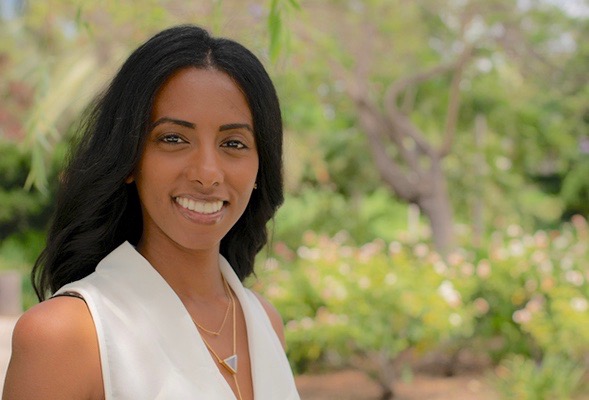
Marginalized groups a focus
for Marriage and Family Therapy
By Michael Klitzing | SDSU NewsCenter
This summer, associate professor Sesen Negash became the first person of color to serve as director of San Diego State University’s Marriage and Family Therapy (MFT) program, which trains clinicians to work with families in diverse communities.
Sesen, an Eritrean American who joined the College of Education faculty in 2017, has conducted research on the impact of sexual behaviors on monogamous relationships, as well as familial relationships of adult males transitioning out of prison.
The SDSU News Team spoke with her on the work of MFT, the importance of strong faculty role models for students of color and communities she’d like to better serve.
What makes MFT so special at SDSU?
Our focus is on doing the work from a social justice perspective, and we’re really mindful that this field is here to serve a very vulnerable population. And often those populations are vulnerable not just for the situations they are in, but because of the cultures they are in and how those cultures are received. We’re really focused on helping those who aren’t just marginalized but are within the margins of the margins. We train students and expose them to situations where they are serving communities that often get overlooked and are dealing with a lot of societal and institutional issues—racism and sexism, you name it.
Do you see significance in being the first person of color to direct this program?
It’s really exciting because our students are also really diverse; about 78% of our students are students of color, which we’re really proud of. For many years, despite the diversity within the program, the program has been led by white faculty. Though the focus of the program has always been to focus on diversity, the leadership has reflected the majority. All of us are really excited to (have me) embody what we’re trying to do. I think students, by looking at me, are able to think, “That’s a possibility for me.”
Did you have similar role models early in your academic career?
I did not. I was part of programs where the vast majority of the faculty were white and often, when it came to research, it was white males. So I didn’t have that modeled in my mentors and that felt like a deficit. I always felt supported, but I always knew there was something missing—a sense of disconnect on some level because I was going into a lot of these experiences feeling like I had to make up for a sense of presumed incompetence. That’s something that I still hold—that doesn’t just leave you. But I’m hoping that now, some of our students won’t have to experience that to the same extent.
What do you hope to accomplish as director?
I hope to try to encourage students who may not otherwise think that counseling, mental health or therapy is something they want to get into. I want to promote this field within communities of color. The African American community in particular is underserved in mental health, partly because of all the stigma associated with it, but also because we just don’t have enough clinicians who are African American or black. I want to see that change.
______________________
CaseyGerry attorney elected to
Consumer Attorneys of California
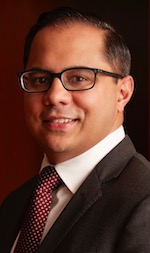
Srinivas Hanumadass – an attorney with San Diego plaintiffs’ law firm CaseyGerry – was elected to the board of directors of the Consumer Attorneys of California (CAOC), a statewide professional organization of attorneys representing consumers in personal injury, product liability cases and other causes.
According to CaseyGerry’s managing partner, David S. Casey Jr., Hanumadass’ new role represents another chapter in the firm’s longtime involvement with CAOC. “Since David S. Casey Sr. founded the California Plaintiff Trial Lawyer Association (now CAOC) in 1961, our firm has continued to support and advocate for this outstanding organization. We are proud to have Srinivas carry on the legacy of my father and the firm and represent us on the CAOC board,” he said.
Hanumadass specializes in serious personal injury litigation and is active in the legal community. He has served as vice president and secretary of the San Diego County Bar Association and served two terms as president of the South Asian Bar Association.
He is a recent graduate of the American Association for Justice’s Leadership Academy and was awarded with a Certificate of Recognition at AAJ’s annual conference in San Diego this summer. Last year, he was given the Outstanding Service to Community Award from his alma mater, the Thomas Jefferson School of Law.

